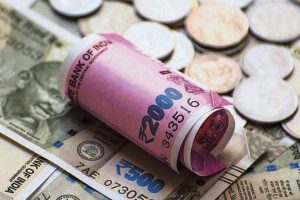Thirty years ago, the leadership of the Party and State defined “education as the top national policy.” It showed a good strategic vision. The historical reality of so many countries has shown that the change in mindset is the main root of breakthroughs in development.
Initially, it was excellent leaders or groups of pioneering intellectuals. It then spread to the common thinking of the whole community, creating excellent material strength for the country’s development. Such change often begins and is associated with significant educational policies and reforms. Successful educational reforms are truly a profound and great “revolution.” The education policy as the top national policy of Viet Nam was stated very early on, but unfortunately, in reality, many strategies, plans and policies have not shown that spirit for a long time. Our country’s financial resources for education investment are still very small, accounting for a very low proportion of GDP compared to other countries. Viet Nam’s investment in higher education is only 0.33 per cent of GDP, and some say the rate is only 0.25 per cent of GDP. In many countries, the investment rate for higher education is two to six times higher than that of Vi?t Nam. For example, in Thailand the percentage is 0.64; China 0.87; Korea 1; Singapore 1; Malaysia 1.13; Poland 1.22; France 1.25; England 1.29; Australia 1.54; New Zealand 1.63 and Fin- land 1.89. Viet Nam’s average investment per student is US$316, while other countries invest two to five times higher. For examples, Indonesia is $682, Thailand $1,121, Malaysia $2,505, Singapore $11,639, Australia $12,182, and the UK $16,603.
Advertisement
The level of university access (enrollment rate) of students who finish high school in Viet Nam is 28 per cent, the lowest in Southeast Asia. To truly be a top national policy, education needs to be given much more attention by the country’s leaders.
For a long time, the country’s leaders paid the education sector less attention than other sectors, except for President H? Chí Minh, as soon as the young revolutionary Government was formed, considered illiteracy, hunger and invaders as the three ‘enemies’ to fight. It is necessary to have a sufficient and feasible strategy for developing higher education to ensure high-quality human resources that meet the minimum requirements of an industrial country with high income in the next 20-25 years. The investment budget for education should be clearly distinguished without adding the expenditures for other fields to education. It is also necessary to reform the investment method for schooling. To achieve the highest efficiency with limited financial resources, the Government needs to call for investment from the private sector and international partners in education and fundamental reform in public investment. The development of higher education is necessarily based on training to provide high-quality human resources for the country. At the same time, the proportion of workers who have graduated from university in the social labour structure by age should also be increased. The rate in our country is currently only about 12 per cent, while in many developed countries the rates are between 32 and 36 per cent.











